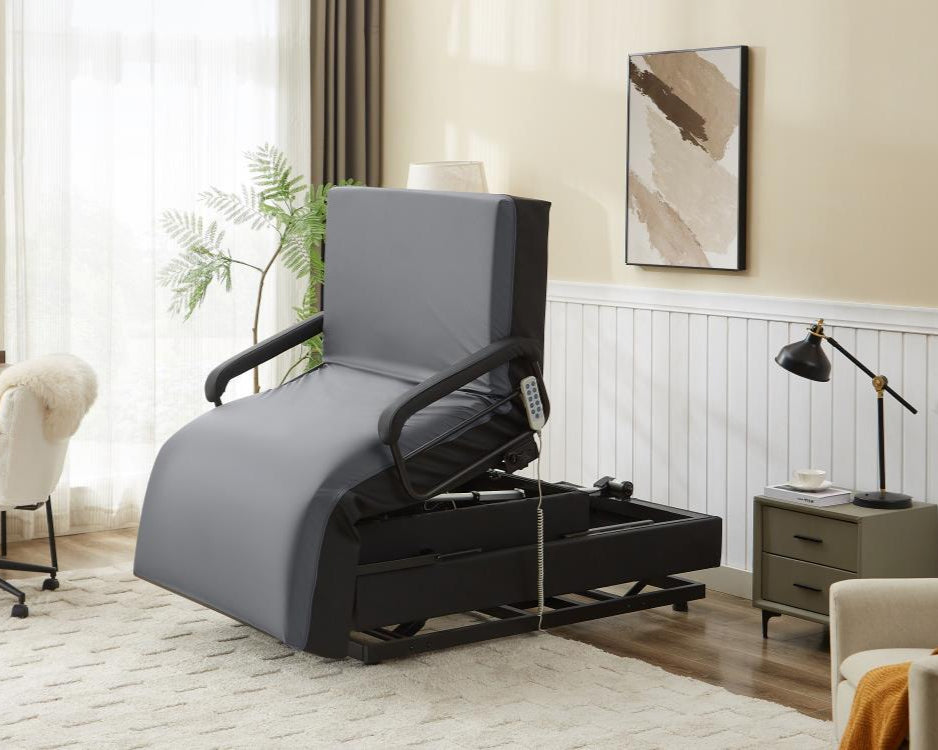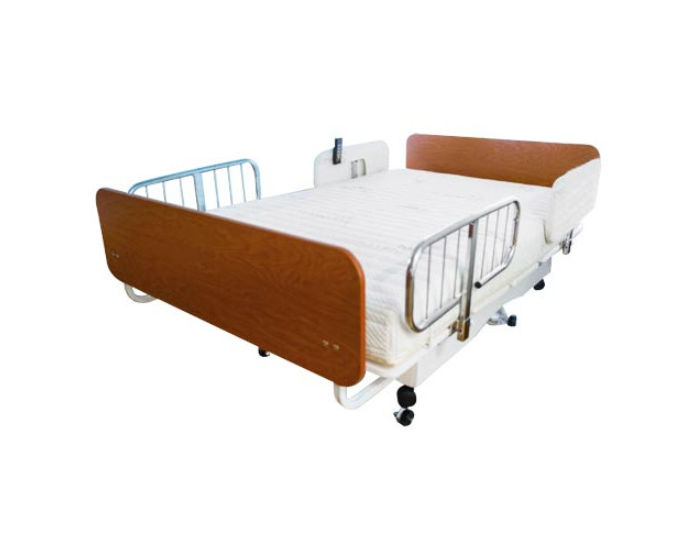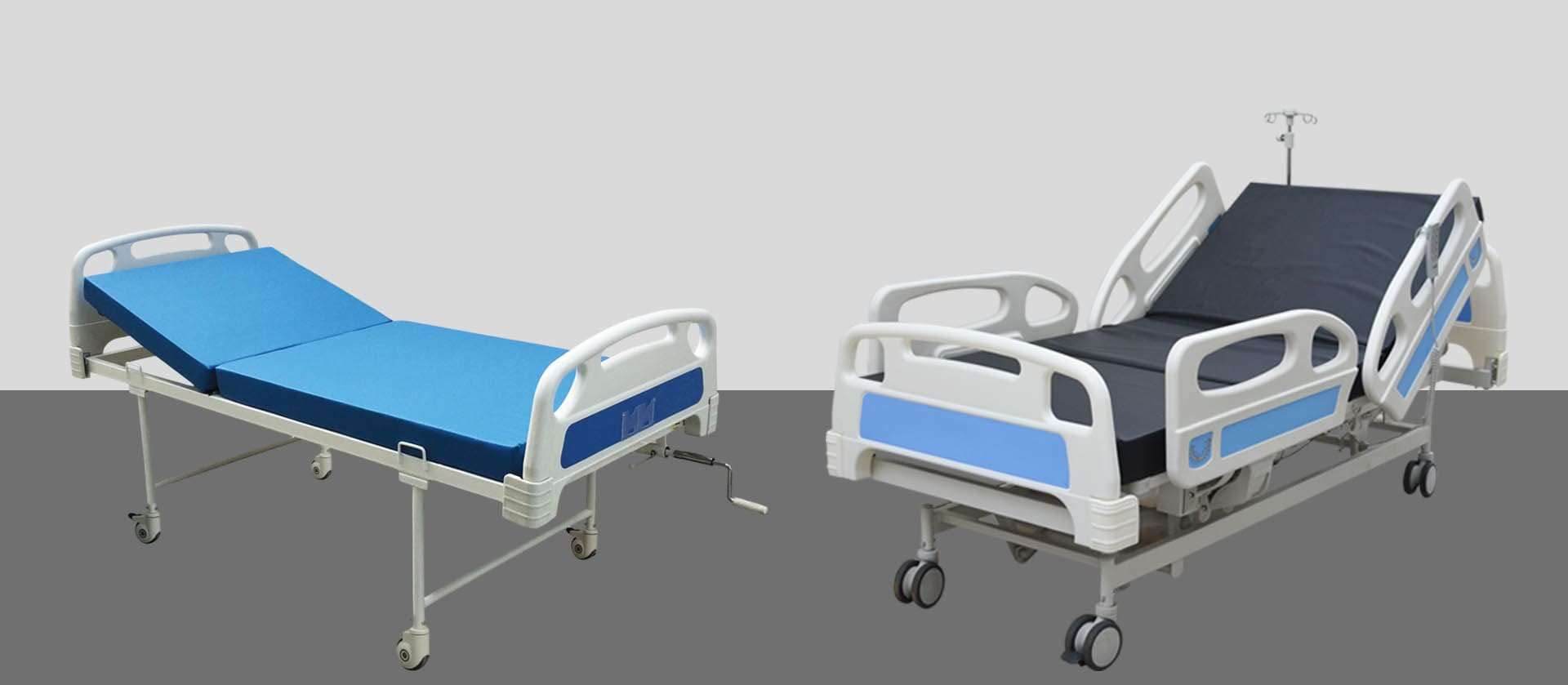How Hospital Beds For Home Use can Save You Time, Stress, and Money.
How Hospital Beds For Home Use can Save You Time, Stress, and Money.
Blog Article
About Hospital Beds For Home Use
Table of ContentsHospital Beds For Home Use Fundamentals ExplainedHospital Beds For Home Use Fundamentals ExplainedHospital Beds For Home Use Things To Know Before You Buy6 Easy Facts About Hospital Beds For Home Use ShownSome Known Details About Hospital Beds For Home Use The Definitive Guide to Hospital Beds For Home UseSome Known Factual Statements About Hospital Beds For Home Use
There are three major types of healthcare facility beds: handbook, semi-electric, and fully-electric. These beds make use of hand cranks to readjust the bed's height and elevate and reduce the head and the foot.
Semi-electric beds have an electrical motor to increase and lower the head and foot parts of the bed. Individuals and caregivers adjust the placing by pushing buttons utilizing a hand necklace. The height of the bed is changed by hand with a hand crank. Full-electric beds have an electrical motor that can increase the head and foot sections of the bed along with the whole height and positioning of the bed.
The Best Strategy To Use For Hospital Beds For Home Use
There are a number of types of hospital beds, each designed to fulfill details individual requirements. Here are some common kinds: This is the most typical type of medical facility bed, created for basic medical usage.
Reduced to the ground than a common bed. This type of bed is created for larger people, with a broader structure and greater weight ability than a conventional bed.
This sort of bed is created for seriously sick patients who call for open tracking and specialized clinical tools such as ventilators and infusion pumps. This kind of bed is created for usage during labor and shipment, with flexible settings and features to support the mommy and baby during the birth procedure.
The Greatest Guide To Hospital Beds For Home Use
Numerous feature and the accessories do increasing traction to various components of the vertebra and the extremities without relocating the human body. These are simply a few examples of the kinds of hospital beds available. The particular kind of bed utilized will certainly rely on the patient's condition, medical requirements, and various other factors.
Right here is the important things you need to know. A one-function medical facility bed is a clinical bed that permits a person to relocate only the head or foot area up or down. A 2 function hospital bed generally describes a kind of medical bed that has two adjustable functions to aid people in hospitals or treatment centers.

About Hospital Beds For Home Use
A 7-function ICU bed is a kind of medical bed that provides a number of flexible functions to sustain critically sick people in a critical care unit (ICU) (hospital beds for home use). The 7 functions commonly include: Back-rest adjustment: The back-rest can be readjusted to different angles to aid the patient stay up or relax comfortably
Height change: The bed can be raised or lowered to make it simpler for clients to get in and out of bed, and for caregivers to provide care. Trendelenburg placement: The entire bed can be slanted to advertise blood flow and flow in the body. Reverse Trendelenburg setting: The bed can additionally be slanted in the opposite direction to promote blood circulation and blood circulation in the upper body.
While more budget friendly than electrical models, these beds require physical effort for modifications. The primary benefits of hands-on beds are their cost and integrity, as they do not depend on power. However, the need for manual initiative can be a limitation in situations where fast adjustments are necessary or where caregivers face physical challenges.
Rumored Buzz on Hospital Beds For Home Use
Semi-electric health center beds offer a balance of guidebook and electric controls. These beds supply a perfect center ground in between handbook and totally electric alternatives, supplying convenience of use without the complete price of electric designs.
Semi-electric beds are fit for clients that require moderate modifications to the head and foot areas yet can manage without regular elevation changes. This makes them a cost-effective option for those looking for comfort and comfort without the demand for constant repositioning. Fully electric healthcare facility beds include electric controls for smooth adjustments to the height, head, and foot sections.
Specialty health center beds, such as ICU beds, lasting care beds, and bariatric beds, are thoroughly created to find more info resolve details clinical needs. These beds offer tailored look after diverse individual teams, boosting both end results and comfort. In the adhering to sections, we will discover the major kinds of specialty health center beds, detailing their particular advantages and applications.
With years of experience in making electric linear actuators - hospital beds for home use and close collaboration with weblink the healthcare industry, TiMOTION is well-positioned to give trustworthy medical care solutions. Our up and down integrated company takes care of every action of the production process, from design to actuator setting up, guaranteeing we provide outstanding worth and personalized services customized to your details requirements
The smart Trick of Hospital Beds For Home Use That Nobody is Talking About

For more information regarding integrating these technologies into your items, call us today. More reading:.
Information is visit this site sourced from the Medicare Cost Record. Accessed January 2025. Temporary severe care medical facilities have the greatest typical variety of beds at 187. They are the most typical kind of health center in the united state and comprise greater than 50% of united state healthcare facilities. Children's hospitals have 178 beds generally and VA healthcare facilities typical 175 beds.

8 Easy Facts About Hospital Beds For Home Use Shown
A medical facility bed is a bed made especially for clinical functions. It is not just an area for patients to rest, however additionally a platform for clinical procedures. Unlike common home beds, hospital beds typically have flexible attributes, which can promote medical staff to make different modifications according to the requirements of people, such as transforming the height, inclination, and support angle of the back and legs of the bed.
Report this page